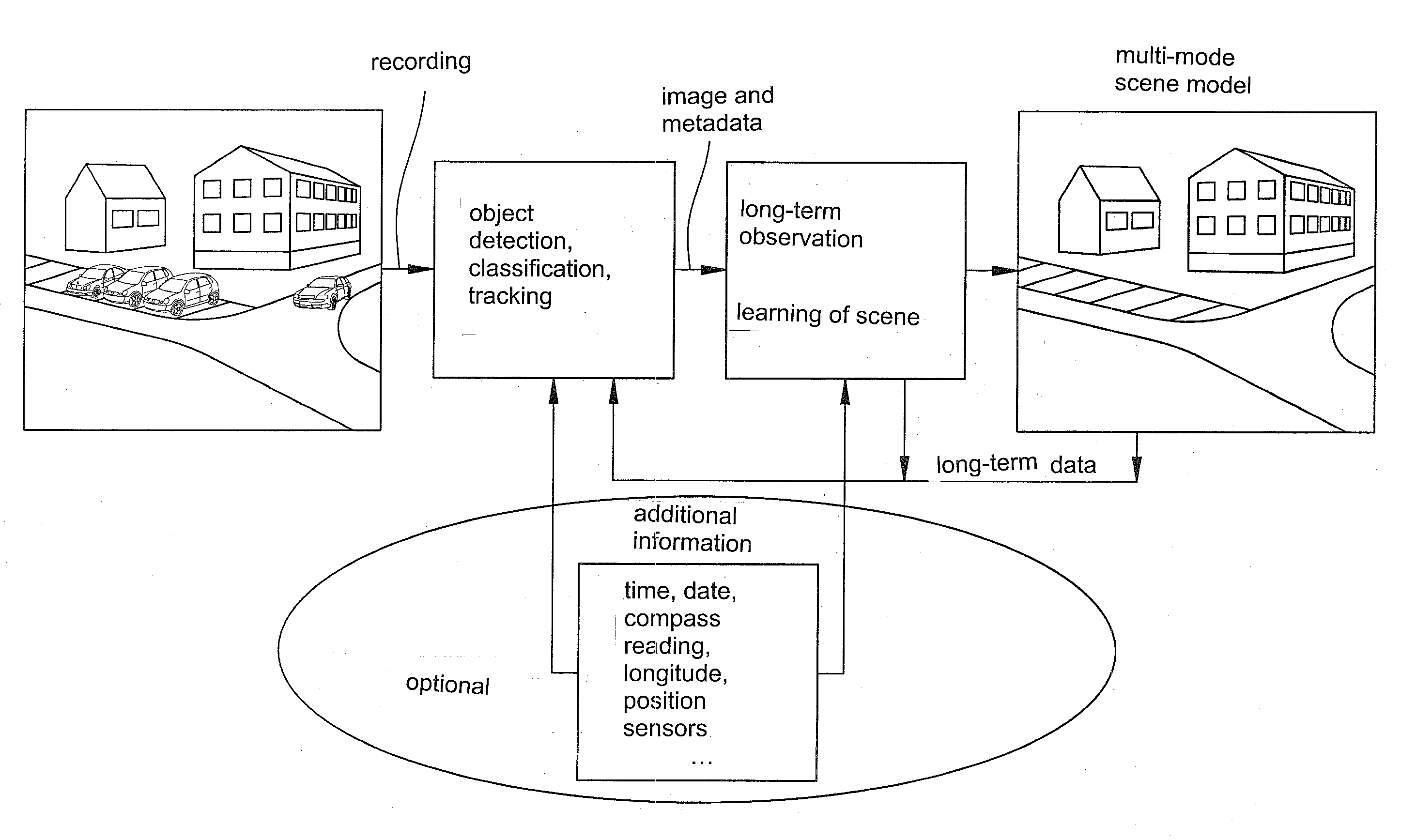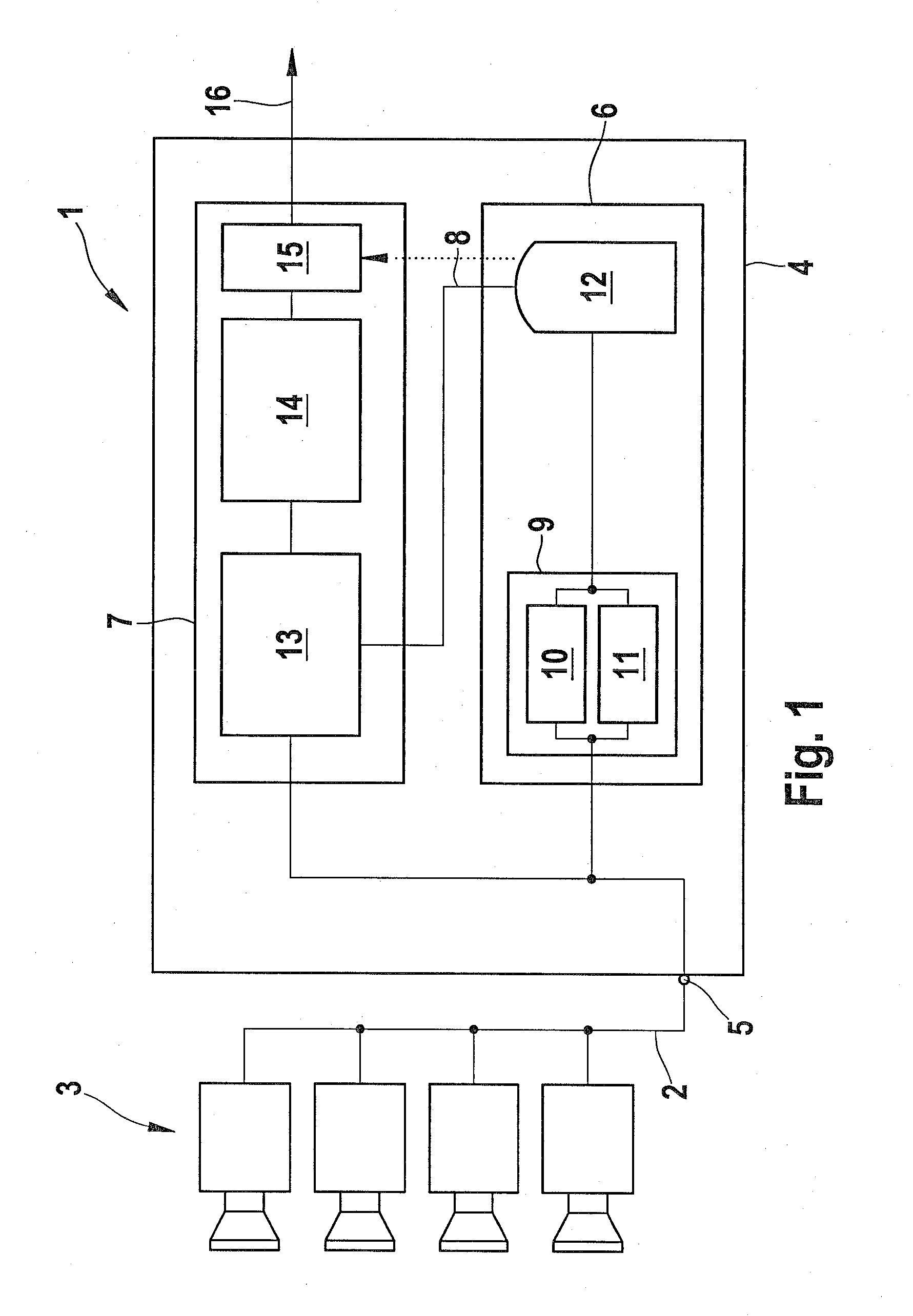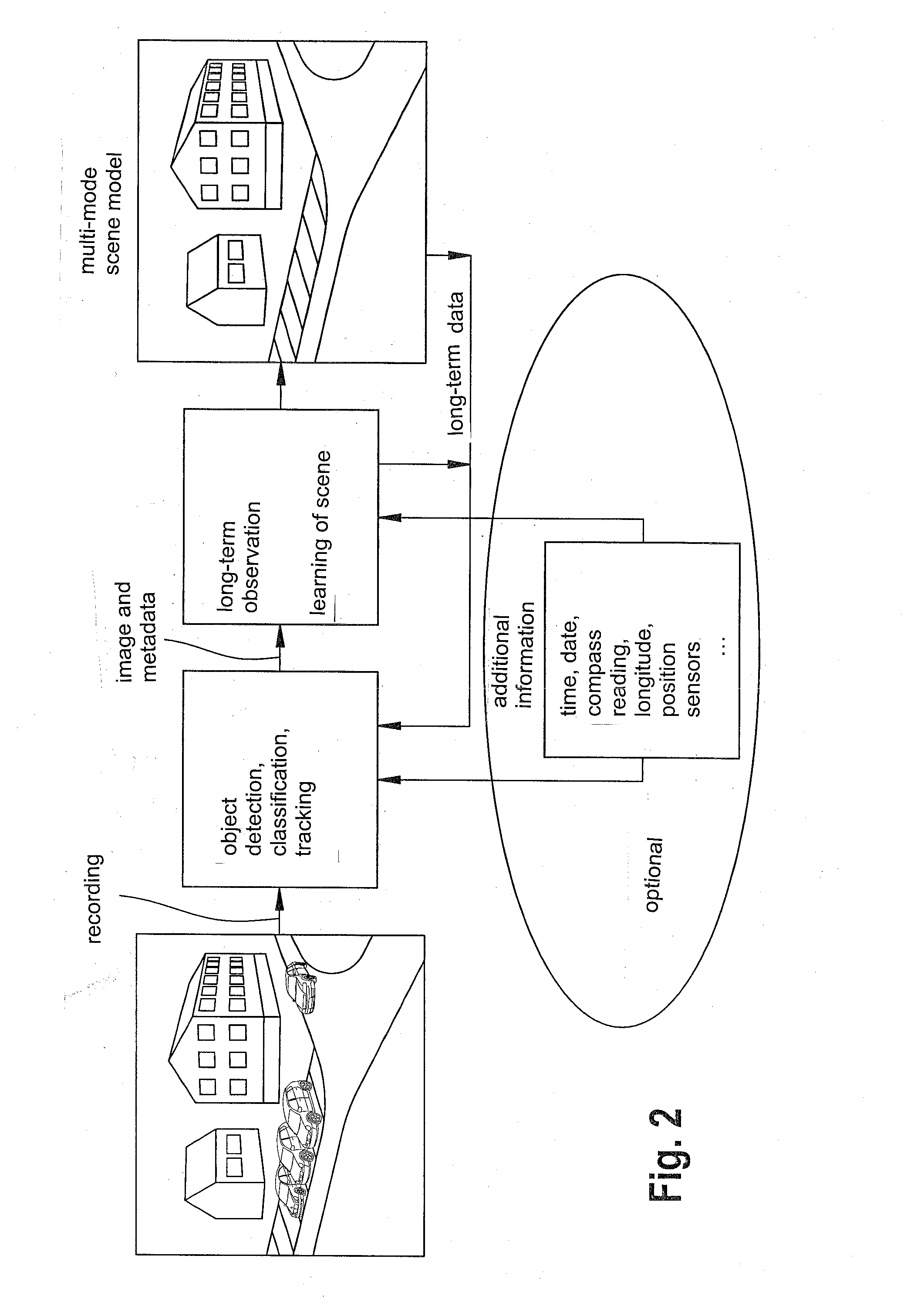Image-processing device, surveillance system, method for establishing a scene reference image, and computer program
a technology of image processing and scene reference, applied in the field of image processing device, surveillance system, method for establishing scene reference image, and computer program, can solve the problem of fatiguing surveillance personnel's surveillance activities, and achieve the effect of improving object tracking
- Summary
- Abstract
- Description
- Claims
- Application Information
AI Technical Summary
Benefits of technology
Problems solved by technology
Method used
Image
Examples
Embodiment Construction
[0045]FIG. 1 is a schematic block circuit diagram of a surveillance system 1, which is connected via a network 2 to a plurality of surveillance cameras 3. For example, the surveillance cameras 3 are fixed-mounted surveillance cameras of a known design. The network 2 is embodied in a wired or wireless form; transmission can also occur via the Internet. Video data streams or video sequences of the surveillance camera 3 are conveyed via the network 2 to an image-processing device 4. Optionally, the network 2 is also provided with video recorders for intermediate storage of the video data streams. After transmission of the video data streams of the surveillance camera 3 via an interface 5, the video data stream is divided and on the one hand, travels to a learning device 6 and on the other hand, travels to an analysis module 7.
[0046]The learning device 6 serves to generate a scene reference image, which is transmitted from the learning device 6 to the analysis module 7 via a connecting ...
PUM
 Login to View More
Login to View More Abstract
Description
Claims
Application Information
 Login to View More
Login to View More - R&D
- Intellectual Property
- Life Sciences
- Materials
- Tech Scout
- Unparalleled Data Quality
- Higher Quality Content
- 60% Fewer Hallucinations
Browse by: Latest US Patents, China's latest patents, Technical Efficacy Thesaurus, Application Domain, Technology Topic, Popular Technical Reports.
© 2025 PatSnap. All rights reserved.Legal|Privacy policy|Modern Slavery Act Transparency Statement|Sitemap|About US| Contact US: help@patsnap.com



